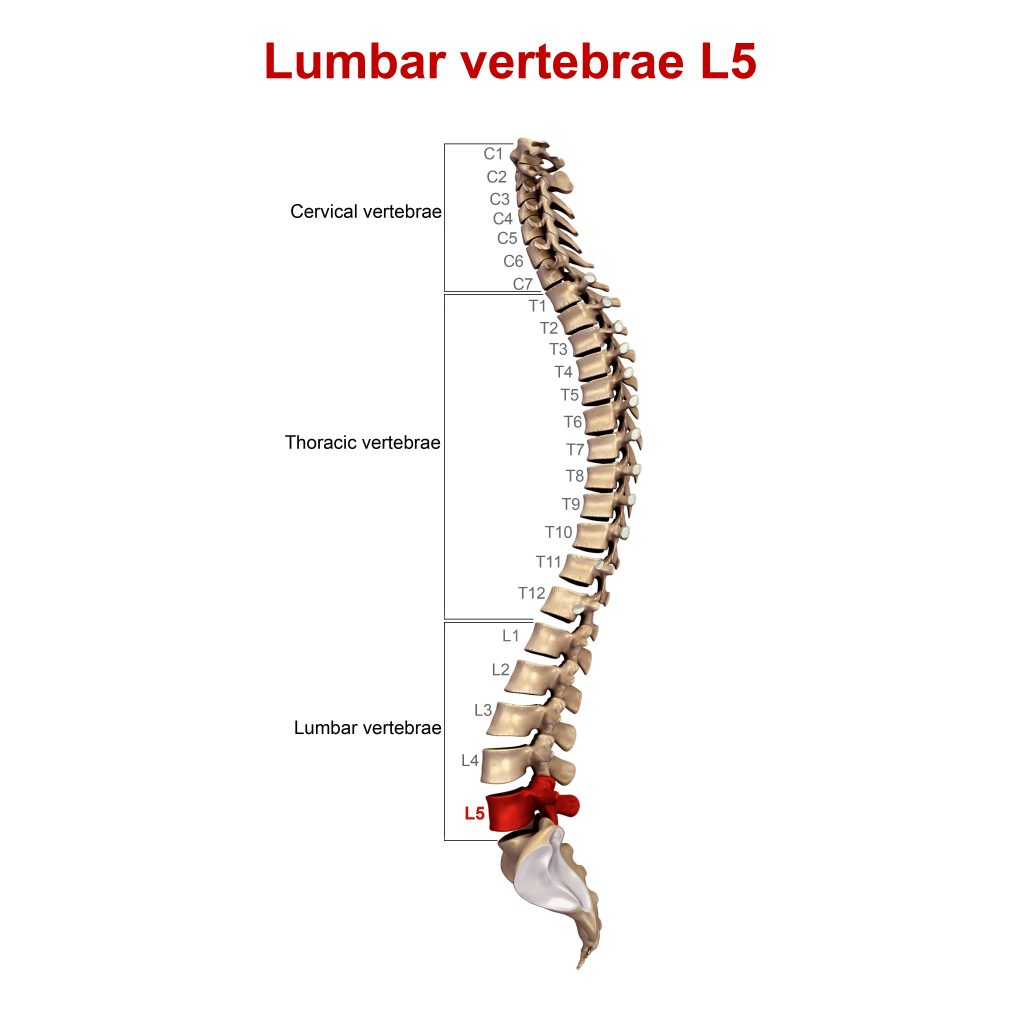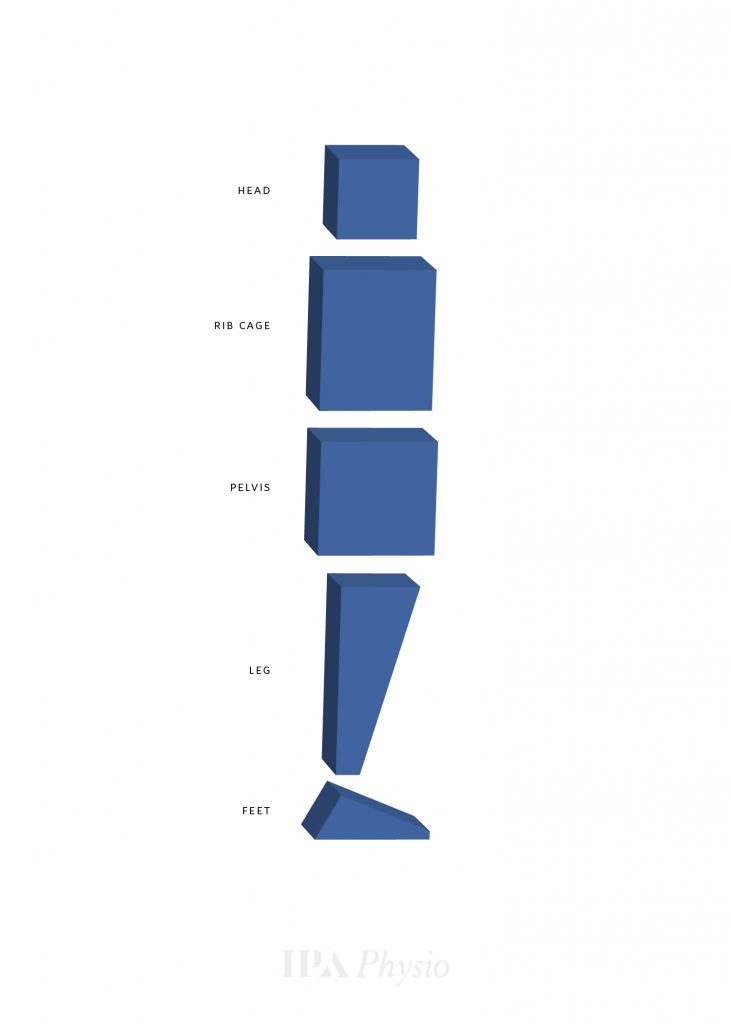A Guide to Standing Posture
In a previous post, I discussed the importance of posture and alignment related to pain and function. Most injuries occur due to an accumulation of stress rather than one traumatic event. Pain may be triggered by bending over to lift a box, but the stage was set by the countless hours of poor load and force transfer.
The Spine
The spine acts as a load and force transfer system. The spine needs to be mobile as well, but rarely should the primary movement be initiated from the spine. Movement initiation occurs from the extremities. There is an old mantra: proximal stability for distal mobility. To paraphrase, spine (trunk/core) stability allows for movement initiation from the arms and legs. The purpose of this post is not to detail movement mechanics, but rather to outline the basics of how one’s alignment affects load and force transfer through the spine.
Load is distributed from the top to the bottom and vice versa, and should be transferred equally along the route. Too often people sit and stand and move in ways that place unequal stress on 1 or 2 segments. The vast majority of the time these segments are L4-5 and L5-S1.

In an inefficient alignment these segments stop transferring load and force and start absorbing it. This results in at least 4 problems:
- Advanced (not in the positive sense) degeneration of these segments.
- Possible pain in the spine and / or pain in the buttock and lower extremities.
- Decrease is loading capacity.
- Decrease in force generation.
It is helpful to understand that after the age of 25 our bodies begin slowly degenerating (sorry, it’s true!). When this becomes advanced we call it ‘arthritis’, ‘degenerative joint disease’, and other things. My goal for all of my clients, family, friends, and YOU the reader is that each segment of your spine and every joint in your body would degenerate at the same rate! In order for that to occur, load and force must be transferred equally through each joint. And in order for this to occur, alignment must be optimal.
Faulty Alignment
Below are 2 common faulty standing alignments and lastly, what we consider to be an optimal alignment. I will outline the problems associated with each faulty alignment and the benefits associated with the optimal alignment, as well as how to position yourself in this manner.
The focus here is on the spine. For this reason the pictures show the arms crossed over the chest to enhance visualization of the spine. Vicky Johnson, co-founder of The Institute of Physical Art, developed a function-based postural classification system called the Saliba Postural Classification System. Within this system, we name the postural alignment according to the verticality of the rib cage in relation to the pelvis and angle of the rib cage.
Faulty Alignment 1: Posterior (rib cage is behind pelvis) / Anterior (rib cage is tipped forward). Also known as ‘swayback’ posture or laptop posture.

Faulty Alignment 2: Posterior (rib cage is behind pelvis) / Posterior (rib cage is tipped backwards). Also known as military posture or dancer posture.

Notice in both of these postures the rib cage is behind the pelvis. Imagine pressing straight down through the shoulders of each position. We would expect to see a ‘buckling’ in the lower back like a hinge in a soda can. This would cause the pelvis to shift further forward than it already is, exacerbating the system. Loading these faulty alignments will require compensatory increased work from the spine – reducing the ability to transfer that work to the extremities. Repetitive increased load on these spinal segments may lead to injury and degeneration at a faster rate than the rest of the spine.
Other problems include:
- Breathing/diaphragm function is impaired because the rib cage is not vertical.
- Poor core function and pelvic floor function due to inappropriate alignment.
- Forward head posture: stress on neck and shoulders due to forward angulation of rib cage.
Optimal Alignment: Vertical (rib cage is aligned vertically over the pelvis) / Vertical (rib cage is not tipped forward or backward). Also known as ‘I feel like I’m falling forward’ posture.

Notice in this posture the rib cage is aligned vertically on top of the pelvis and the rib cage is also not tipped forward or backward. Imagine pressing straight down through the shoulders. We would not expect to see any buckling – the load will be transferred to the feet and into the floor (where movement will be generated from). Spinal segments will be loaded equally as the force is distributed, reducing the likelihood of injury and degeneration.
Other benefits include:
- Breathing/ diaphragm function is optimized because the rib cage is vertical.
- Core function and pelvic floor function is optimized.
So, quit hanging back, and get over yourself! (Also known as ‘get the rib cage over the pelvis’):
Follow this checklist to optimize your standing alignment.
- Stand with feet side by side and hip width apart.
- Make sure your body weight is equally distributed between the front and back of each foot.
- Relax your knees (‘locked out’ knees affect the alignment above). This should have the effect of dropping your tailbone down, which verticalizes the pelvis.
- Look down and towards your feet – this will bring the rib cage on top of the pelvis. You should feel like you are weight-bearing through the front of your body, not the back.
- To align your head and neck: look straight forward and nod ‘yes’ a few times to find a comfortable, middle position for your neck alignment.
- To align your shoulders, follow these steps:
a. Do not alter the alignment of your spine while completing these steps.
b. Gently shrug your shoulders.
c. Rotate your palms and elbow creases forward (try to get little finger facing forward).
d. Lower shoulders down until you feel the shoulders rest on the ribs.
Take a picture of yourself from the side before and after the correction – you’ll be amazed. Leave comments!






